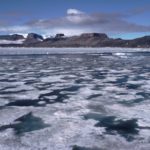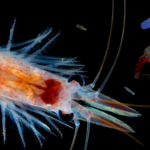Massive circumpolar biomass of Southern Ocean zooplankton: Implications for food web structure, carbon export, and marine spatial planning
1 November, 2022 by Simeon Hill
With rapid, sector-specific climatic changes impacting the Southern Ocean, we need circumpolar-scale biomass data of its plankton taxa to improve food web models, blue carbon budgets and resource management. Here,…
